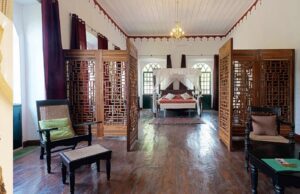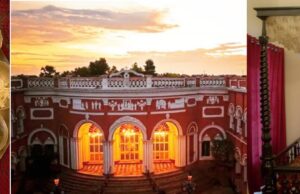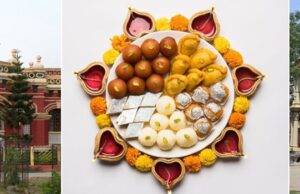
WoT's Hot
Kolkata has some historical markets, many of them typical to the city and intertwined with its growth as a city. For years, imbibing the typical Indian bazaar, traditional markets like Gariahat and Hatibagan served the populace on a daily basis while New Market catered to the fanciful shopping experience., All this changed with the opening of Forum in 2003 the first mall in the city. Since then the shopping experience has taken a new dimension for the ordinary Kolkatans. Here we list a gamut of bazaars, markets and malls for a varied shopping experience.
Kalighat Market
The Market and the area around it is in a very old part of the city. Almost a continuation of Lake Market, it covers the area around the famous Kali temple which dates back to the early 19th century. Kali is considered the ruling Goddess of the city and thus very popular! A very busy place, most of the activities center around the temple or are related to it. Apart from the usual fares found in most markets, with the temple in its precinct there are the dashakarma bhandars – literally meaning shops where you can get ‘ten different things’. The bhandars are a treasure trove, storing goods related to Hindu rituals and worship, different kinds of beads or malas, mats, incense, puja utensils, saffron chadors, red gamchas and more. The market has a special flower section and prior to the pujas of the various Gods and Goddesses you can buy colorful, locally made clay idols of the same. Close by is the Keora tala burning ghat and adjacent to it the Adi Ganga, - original Ganga - once a swift flowing river but now not more than an apology of a canal.
Burra Bazaar
As the name suggests it is the ‘BIG’ market of Kolkata. In fact, it is one of the largest wholesale markets in the country. As you cross the Howrah Bridge from the station you have to pass through the Burra Bazaar area. Originally a yarn and textile market it has expanded right across Mahatma Gandhi Road to Sealdah on its Eastern fringe. The market is divided into segments, each dealing with specialised ware, Sutapatti, Dhotipatti, Fancypatti, Tulapatti, Chinipatti etc. Pandemonium at best! It takes a strong heart to survive Burra Bazaar. The lanes are narrow and cobbled as befits a 200 plus years old market. All modes of vehicle from hand cart to small tempo vans ply mostly moving on their own velocity with the drivers shouting ‘shabdhan, shabdhan’! It is the place for bulk purchase at cost price. In fact, most shops in the city and in Howrah area stock their supplies from this market. The Shree Digambar Jain Bada Mandir on 1 Basak Street is in the market precinct.
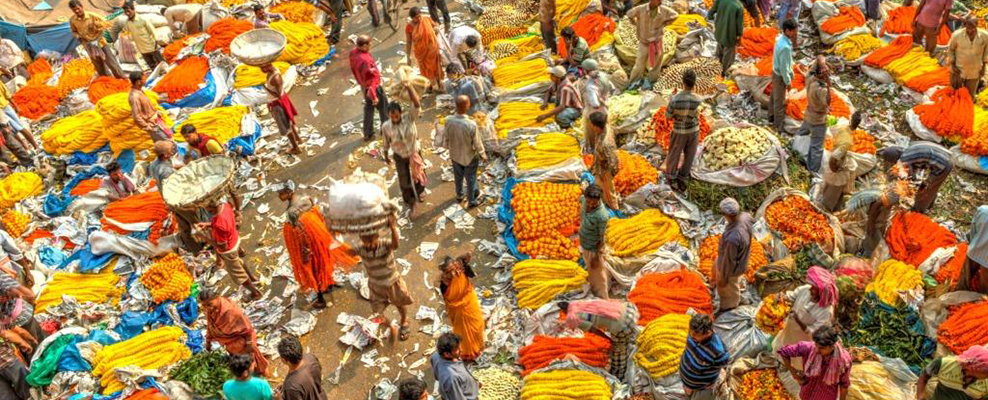
Howrah Flower Market
A small flight of steps leads down from the southeast end of the iconic Howrah Bridge to a burst of color, the ‘Howrah Phool Bazaar’ (flower market) below it. Bathed in its morning glow the kaleidoscopic color of Phool Bazaar awakens with the sun, and by noon it’s all over here. A fascinating place, vibrant and colorful, with tons and tons of flowers; supplied from the suburbs and brought across in trains to Howrah station across the river. All around you the ground is piled high with loose marigolds, garlands of jasmine and hibiscus, and the stalls crammed with roses and exotic flowers. The cities flower supply is met from this market on a daily basis. The light from the flowers mainly the marigold which is of copious amounts reflects a beautiful glow illuminating the place in a yellow-orange hue. Few steps down and you hit the river side - Mallick Ghat, thus its other name, ‘Mallick Ghat Flower Market’ to see bathers and wrestlers while barrage and small boats ply the waterways. A photographer’s delight, the place must have remained the same without much change for centuries.
Gariahat Market
Haat in Hindi is a temporary open air weekly market; it is possible the present precinct of Gariahat was traditionally a haat area. The market continues to be THE place in South Kolkata for all your shopping needs. Stretching east and west from the Gariahat Road crossing and south to Golpark, a part of the market is housed in a non-descriptive concrete building that includes the fresh produce section and an interesting pottery section with beautiful terracotta dias, dia stands, sara platters with alpana designs typical of Bengal. On the first floor, you will find an eclectic array of shops, including block printers and embroiderers.
On Gariahat Road and Rashbehrai Avenue are Calcutta’s famous saree and gold jewelry stores, and some iconic stores such as Traders Assembly, Guin, Haralalka, and A. Sirkar, and Kanishka on Hindusthan Road for exclusive sarees.
But perhaps what Gariahat market is most known for are the pavement shops imbibing a typical Indian bazaar experience, with haggling and bargaining. Here you can get almost everything from clothing, crockery, glassware, flowers, hand bags, jute products, shoes, accessories and lots more for a song, depending on your bargaining power! The pavements are also a gastronomical delight of Calcutta’s famous street food.
Lake Market
Situated near the Kalighat metro station, the market and the area around it, is known for being the hub of the South-Indian community of Kolkata and is dotted with shops selling typical fare of the southern states, giving the market a flavor that you don’t find elsewhere. Freshly roasted coffee beans, banana chips, rasam powder, sambar powder, murukku, papadam, you name it. So for their quota of south Indian spices and delicacies most denizens of this city head to Lake Market. The well-known South-Indian food restaurant ‘Banana Leaf’ is situated here; their sapad (meals on tray) is popular amongst tourists and locals as are their Idlys, Dosas, and Utthapams. The other South-Indian food eatery in the vicinity is Ramakrishna Lunch House, a hot favourite for the purists. ‘Lake Mall’ situated in the area provides a cosmopolitan air to what is otherwise a very old-fashioned market place, with vegetable vendors and florists lining the road sides and pavements.
Triangular Park
Named after the little park as per the shape bifurcating Purna Das Road and Rashbehari Avenue; this shopping arcade is really an extension of the Gariahat Market on its western limit. A relatively small stretch mainly on one side of the road it houses some of the best saree shops in the city. Asha Brothers, Indian Silk House, Bhojraj, Jailakshmi, Priyo Gopal Bishoyie to name a few. On the opposite side is the relatively new five-storied building of Adi Dhakeshwari Bastralaya.
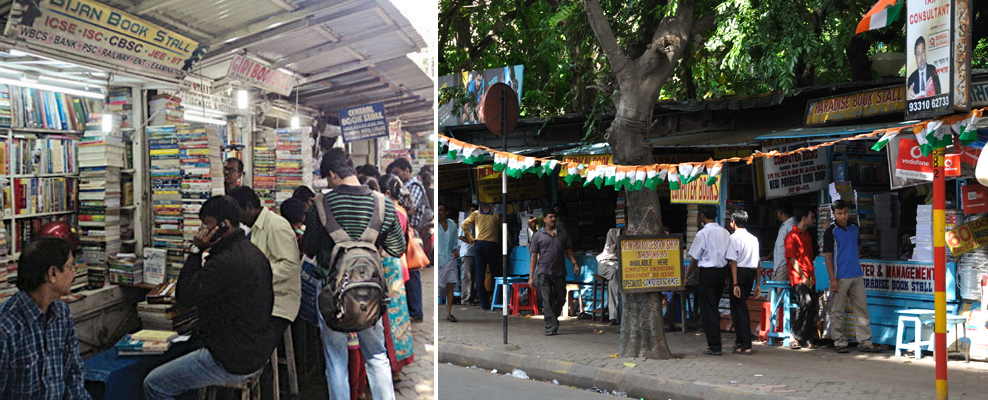
College Street Book Market
A bibliophile’s paradise, it’s referred to locally as boi-para – meaning ‘book locality’. A short stretch of road between Ganesh Chandra Avenue Crossing and Mahatma Gandhi Road in Central Calcutta it’s the largest second-hand book market in the world! You will find many belonging to the legion of ‘bookworm’ browsing amongst the dusty piles looking for that rare 1st edition at a bargain! Most are regulars and known to the shopkeepers over time, you can usually tell them as the ones buying on credit to be paid as EMI. The street also plays host to some of the major Bengali publication houses, Ananda Publishers, Dey’s Publishers, Abhijan Publishers to name a few. The cerebral status of the area manifests best in the iconic College Street’s Indian Coffee House, a hub for Kolkata’s intellectuals, over steaming cups of coffee and delectables served by turbaned waiters recreating the raj era.
Hatibagan Market
No, elephants are not sold here though a romantic version of the name etymology believes that the pachyderms of Nawab Siraj ud-Daulah were parked here during the Battle of Plassey. More likely, a person by the name Hati had a villa with a garden in the area which was later bought by Mehtab Chand Mullick who initiated the market more than 100 years ago making it one of the oldest traditional markets in the city. The Japanese had dropped a bomb here during WW II but mercifully it did not explode! What this market is really known for are its cinema halls and theaters. In fact, no other area in the city has as many. The most well-known of these is no doubt Star Theatre on Beadon Street where stalwarts of early Bengali theater staged plays in the late 19th century. The modern multiplex behind the heritage facade is still popular because of its low ticket prices.
Bowbazaar Gold Market
Apparently the name etymology lies in the word ‘bahu’ meaning ‘many’, but another version claims that the market was the share of the daughter-in-law (bow) of Biswanath Matilal. Certainly innumerable jewelry shops line the road making it the ultimate choice for a Bengali bride for her wedding jewelry. Stretching from Dalhousie Square to Sealdah, the main Bowbazaar Street, (later named B.B Ganguly St.), it’s Kolkata’s gold district or Fort Knox with the best jewelry shops for the famous ‘Bengali designs’ – elaborate but very light jewelry - having their flagship stores here. The area is steeped in nostalgia, with Kolkata’s first tram car plying here in 1873; it is also where the ‘babu culture’ of patronizing the kothas of the baiji (dance girls) in the by lanes of the area flourished. It was also here that one of Bengals’ foremost reformists, Ishwar Chandra Vidyasagar started his life and education under a street lamp. Adjacent to Bowbazaar is Terity Bazaar, Kolkata’s old China town where the first Chinese to the city settled in the late 18th century.
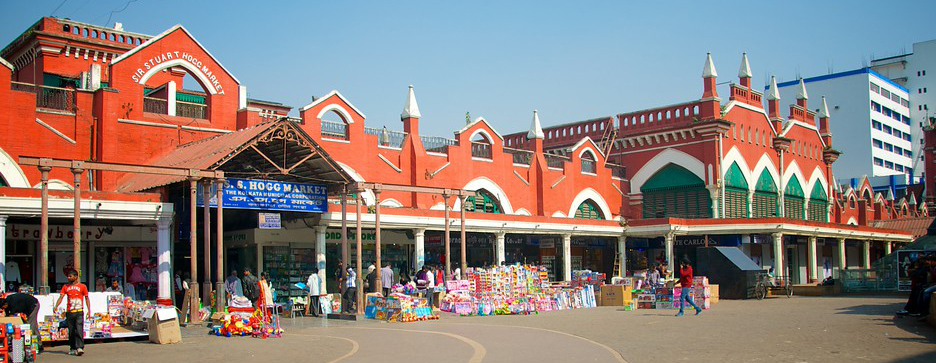
New Market
It is said that you can find anything from a needle to Tigers’ milk in New Market. Despite the mushrooming of shopping malls and arcades, Calcutta’s first municipal market can still hold its own. The old Fenwick’s Bazaar was razed to design this Victorian Gothic market complex by Richard Roskell Bayne, an architect of the East Indian Railway Company exclusively for the white populace in 1874. Located on Lindsay St, it’s officially Sir Stuart Hogg Market (1903) or Hogg Market, but the popular name ‘New Market’ remains.
Over time about 2,000 shops have made it their home. Florists are located near the entrance, A. Bose Pvt. Ltd. (1874) being the most renowned of the lot. Fresh and preserved foods are sold towards the rear and beyond are the butchers. Until the mid-1970s, a separate wing at the back sold exotic animals supplied from across the British Empire.
Some shops here are iconic, like Nahoum & Sons (estd. 1902),l a family business started by one of the last Jewish families of the city. Renowned saree shops are, Dayaram & Co. (estd. 1908), Bombay Silk House and Ghanashyam and Pumposh-Kashmir Shawl Emporium (estb.1935). The market survived a devastating fire in 1985 when the renovated extension at the back happened.
Koley Market
Located near Kolkata’s 2nd largest train Station, Sealdah in Central Kolkata, one could say the market is an extension of Burrabazaar on its eastern extremity. It’s the largest wholesale market in the city, perhaps even in Eastern India. It is from here that all the markets in the city procures and retails fresh produce, vegetable, fish, meat, milk, poultry products and more. Open 365 days, 24 hrs this vibrant market is a photographer’s delight!
Jadu Bazaar
Jadu Babu’s bazaar or more popular Jagu bazaar in Bhowanipore has its own dedicated clientele. Some parts of it are so very North Indian, with stores that sell homemade Punjabi pickles, and, in the winter season, the freshest bundles of sarson sag and the accompanying saags that go into making makki di roti. But the market is also famed for its excellent quality of fruit, the jhola and patali notun gur in season and sesame coated tilkuts. Its’ fish market has a lot of variety including crabs and live fish like singi, magur, koi—the last-mentioned greatly revered by Bengalis. The grocers do a surround sound around the vegetable and fruit shops and in the periphery is a great mutton seller on the main road.
Plenty of plastic products that are practical, and cloth shops and stores that dye your stoles in every imaginable color exist with second-hand book shops. It’s as much fun to shop on the side roads of Jagu bazaar too.
Save Save SaveKolkata has some historical markets, many of them typical to the city and intertwined with its growth as a city. For years, imbibing the typical Indian bazaar, traditional markets like Gariahat and Hatibagan served the populace on a daily basis while New Market catered to the fanciful shopping experience., Al
Other Articles in WANNAGO WOT
What to read next
Featured articles

Welcome Festive Season in Glam, Latin Quarters Launches new #PujoBling Collection with Monami Ghosh
by WOT





































